Zardozi Embroidery: History, Method and Usage of the Royal Craft
Zari Zardozi, the name in itself sounds so resplendent! Think of Zardozi and the words that come to mind are- beauty, opulence and grace! Zari Zardozi is one of the most luxurious forms of embroideries in India.
Zardozi is a form of embroidery that originated in Persia and was brought to India in the 16th century. The word Zardozi is derived from two Persian words: Zar or Zarin which means gold, and Dozi meaning sewing.
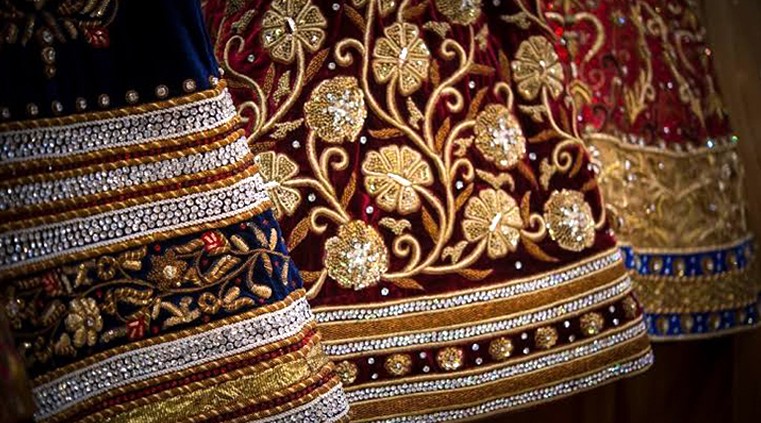
Zardozi is an elaborate metallic embroidery that is done on different kinds of fabrics such as silk, brocade, velvet or satin. This splendid metallic thread embroidery once used to adorn the regal attires of the Kings and the royalty in India. The treasure of the third Mughal emperor, Akbar included a variety of stitched garments that were adorned with metal embroidery.
Zardozi designs are often created using gold and silver threads and can incorporate pearls, beads, sequins, as well as precious stones. Historically, Zardozi embroidery was used to adorn the walls of royal tents, courtrooms, scabbards, wall hangings and the paraphernalia of regal horses and elephants. This splendid embroidery has been adding sheen and glamour to the wardrobes of people for centuries. Ever wondered, what is the fascinating story behind this rich and regal tradition?
The Rich and Fascinating History of Zari Zardozi
Although Zardozi is closely linked to its Persian roots; the gold and silver thread embroidery has existed in India since the ancient times of the Rigveda, between 1500 and 1200 BC. According to a legend, the sacred cloth of Hiranyakashyap, the Asura king, mentioned in the Rig Veda, is the equivalent of present-day garments woven with Zari.
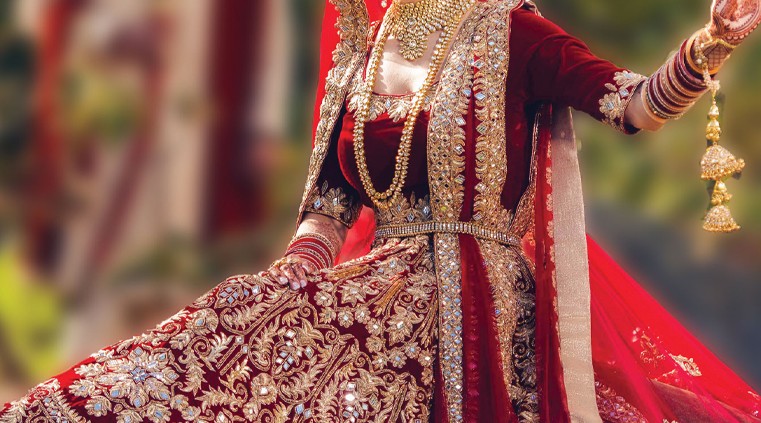
It is believed that the zardozi style of embroidery was brought to India in the 16th century when Mughals promoted the development of various embroidery styles in India. An elaborate and spectacular craft; Zardozi was patronised by the affluent classes.
In the 17th century, the resplendent craft of Zardozi flourished especially during the reign of the Mughal emperor Akbar. However, due to the loss of royal patronage, the craft slowly declined by the end of the Mughal era. Since the cost of raw materials was high; the craftsmen could not carry on with the embroidery on their own. Several artisans left Delhi and went to the courts of Punjab and Rajasthan in search of livelihood.
With the advent of industrialization by the 18th and 19th century; the beautiful craft suffered another setback. By the 20th century, the craft witnessed a revival following India's independence in 1947 and the Indian Government made herculean efforts to promote the Zari Zardozi embroidery.
In the present times, the magnificent craft of zardozi embroidery is primarily done on wedding outfits on vibrant colours such as bright red, pink, maroon, mauve, royal blue, and bottle green for the ceremony. Besides, zardozi is extremely popular on fashion ramps too. From just being revered by the royalty; Zardozi is now used and loved by everyone.
Zardozi, Then and Now!
In earlier times; this rich form of embroidery was done with real gold and pure silver wires along with seed pearls and precious gems stones by the skilled zardozi workers. However, today, they have been replaced with coiled metal wire such as brass wires or copper wires with a golden or silver polish, and silk thread. This makes the Zardozi work pocket friendly and lighter to wear. Although, pure gold and silver wire have been replaced by the lower priced imitations; the shimmer and magnificence of the embroidery still remains intact.
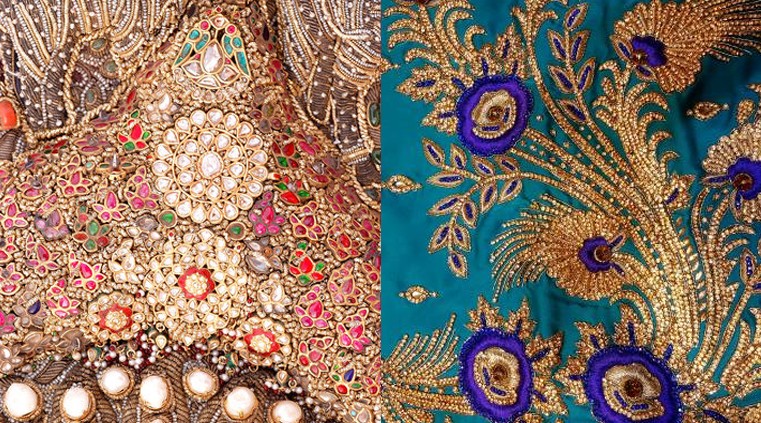
Traditionally, zardozi embroidery was done by male artisans for commercial use, while a few women worked at home creating their own personal collection. With times, things have changed and now women too have joined the commercial workforce working mostly from home-based workshops.
Several families in the ancient city of Varanasi (Banaras) have been credited for reviving this rich craft and are providing the exquisite zari embroidered wedding outfits, sarees, salwar kameez and Sherwanis to boutiques and swanky showrooms all across the country.
At times, zardozi embroidery is also combined with the Dabka work (a spring type of thread) that originated from the city of Lucknow.
Places that are Popular for Zardozi Work
Some of the places in which zari zardozi embroidery is done in the country include Lucknow, Varanasi, Bhopal, Mumbai, Ajmer, Kashmir, Delhi, Hyderabad, Chennai, Agra, and Farrukhabad.
In 2013, the Geographical Indication Registry (GIR) permitted Geographical Indication (GI) registration to the popular Lucknow zardozi, the world renowned textile embroidery.
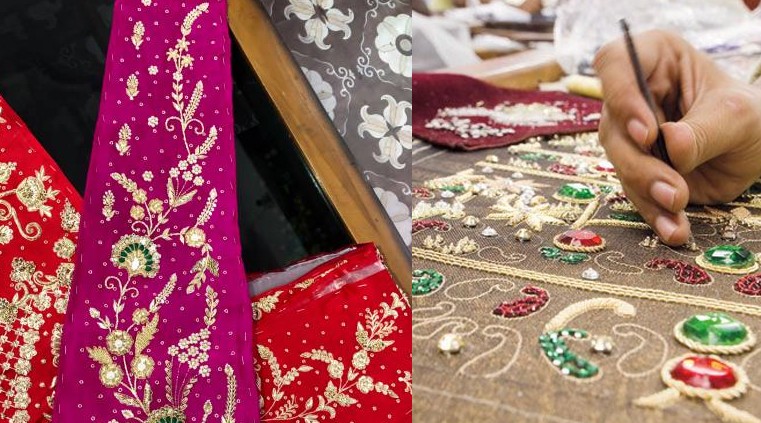
Now, due to the Geographical Indication (GI) status; the zardozi craftsmen, retailers, distributors in Lucknow (as well as the six adjacent districts of Sitapur, Amethi, Barabanki, Rae Bareli, Hardoi and Unnao) have become the sanctioned users of the "Lucknow Zardozi" brand. These states only can carry the unique mark of authenticity of the Lucknow Zardozi.
The Begums of Bhopal used to carry the purses that were beautifully adorned with Zardozi. While zardozi embroidery in Lucknow is more ornate and has a three dimensional motifs (which is similar to Delhi motifs); in Hyderabad and Agra, the patterns are simple and minimalistic with large motifs and in Chennai, there is an influence of regional Tamil zardozi motifs.
Method of the Magnificent Zardozi Embroidery
These days, before sketching the design on the fabric, the motifs are selected and the weight of the final garment is kept in mind as the Zardozi work along with the sequins and beads make the fabric extremely heavy to carry. In order to keep the fabric light; the Zardozi embroidery is done along the border in floral motifs.
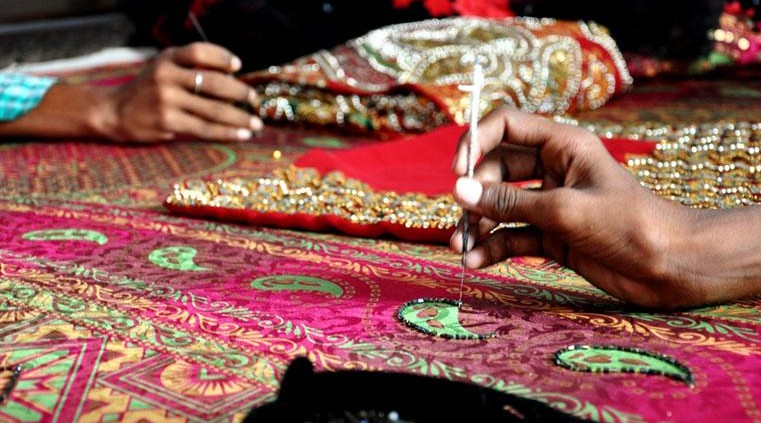
Preparing the Stencil
The process of doing the intricate Zardozi embroidery involves various steps. The embroidery design is first sketched on a sheet of gateway natural tracing paper. Thereafter, a needle is used to make fine holes in paper along the outline in order to prepare a stencil of the intricate design. Thereafter, the elaborate design is traced out on the fabric.
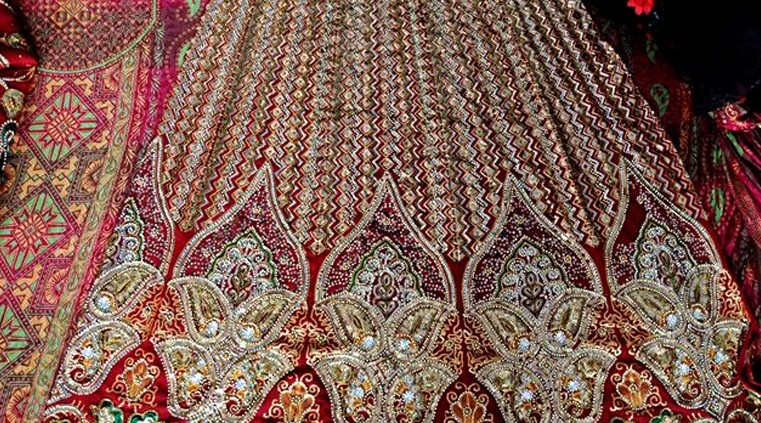
Framing the Fabric on the Adda
The fabric to be embroidered is fixed on an 'adda', the wooden frame that is still used in rural parts of India. While the craftsman sit cross-legged around the 'adda', with their tools. The tools include needles, salmaa pieces (gold wires), sitaaras (metal stars), a variety of sequins, curved hooks, dabkaa (thread), stones, glass and plastic beads and shimmery pieces of spangles. What needs to be noted is that metallic threads of varied specifications are used for different designs.
The adda can be adjusted according to the size of the fabric, thus, enabling the cloth to be stretched tightly over the wooden frame so that embroidery can be done effortlessly and meticulously. A needle is used to pull out each zardozi element and thereafter incorporated into the design by pushing the needle into the fabric. Zardozi craftsmen use different types of needles to pull out different elements.
The Use of Ari in Zardozi
In zardozi embroidery, a particular type of needle is used, known as 'ari' (hooked awl) which allows greater efficiency. It allows the zardozi worker to pass the embroidery thread both above and below the fabric.
A zardozi karigar is an highly efficient artisan who works with both hands. While with one hand, he/she guides the thread below the surface of the fabric and with the other creates the design above. Using spangles, beads, and sequins; the artisan sew them in to create resplendent patterns on a piece of fabric.
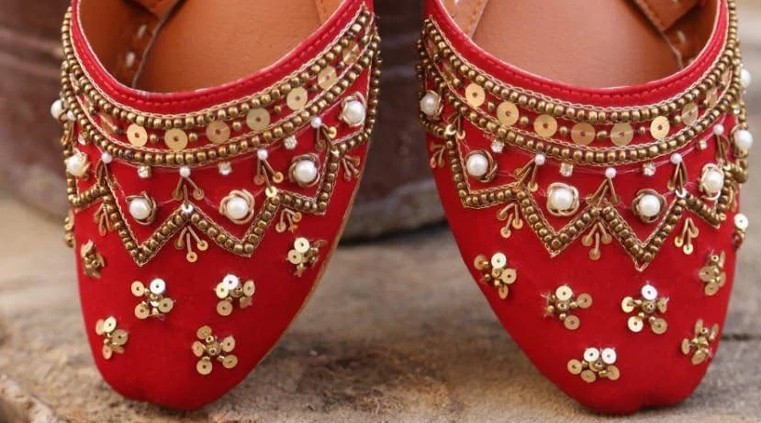
You might find variations between the zardozi work done in different regions. In general, the zardozi embroidery is marked by its use of hooked awl, metallic thread, along with beads and sequins.
Usage of Zardozi in the Present Times
Traditionally, zardozi was used to adorn lehengas, saris, dupattas and even turbans. In the present times; the metal embroidery work has now extended to accessories such as footwear, purses, cushion covers, caps and so on. Besids, Zardozi has even entered the space of interior designing and home décor. Zardozi is being done on the curtains, sofas, table runners, and various other home décor items. Zardozi embroidery lends the interiors an extravagant look!
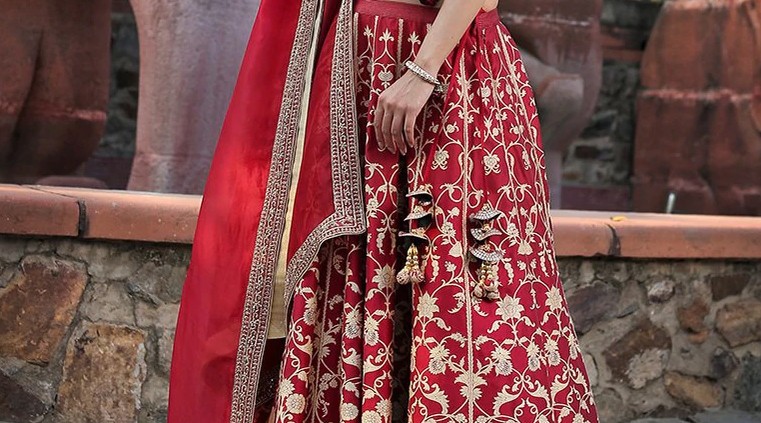
Veteran Indian fashion designer and textile revivalist, Ritu Kumar is known for her love for this historical technique. The designer has conducted on-ground research to preserve the sanctity of this age-old craft and her lavish collection of saris and lehengas often include opulent zardozi hand embroidery work.
A garment embellished with rich Zardozi embroidery is a timeless piece that should be treasured and, passed down through generations, just like this glorious craft!
Latest Posts
Categories
Tags


 +1-403-351-7777
+1-403-351-7777














